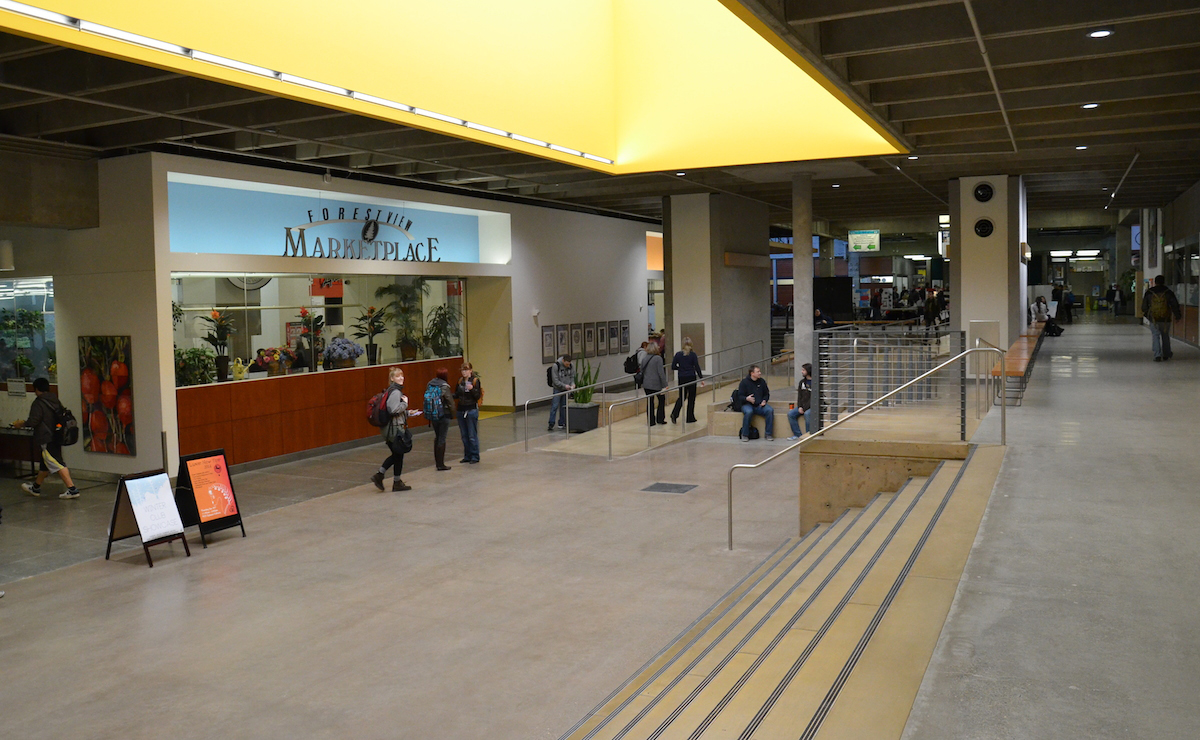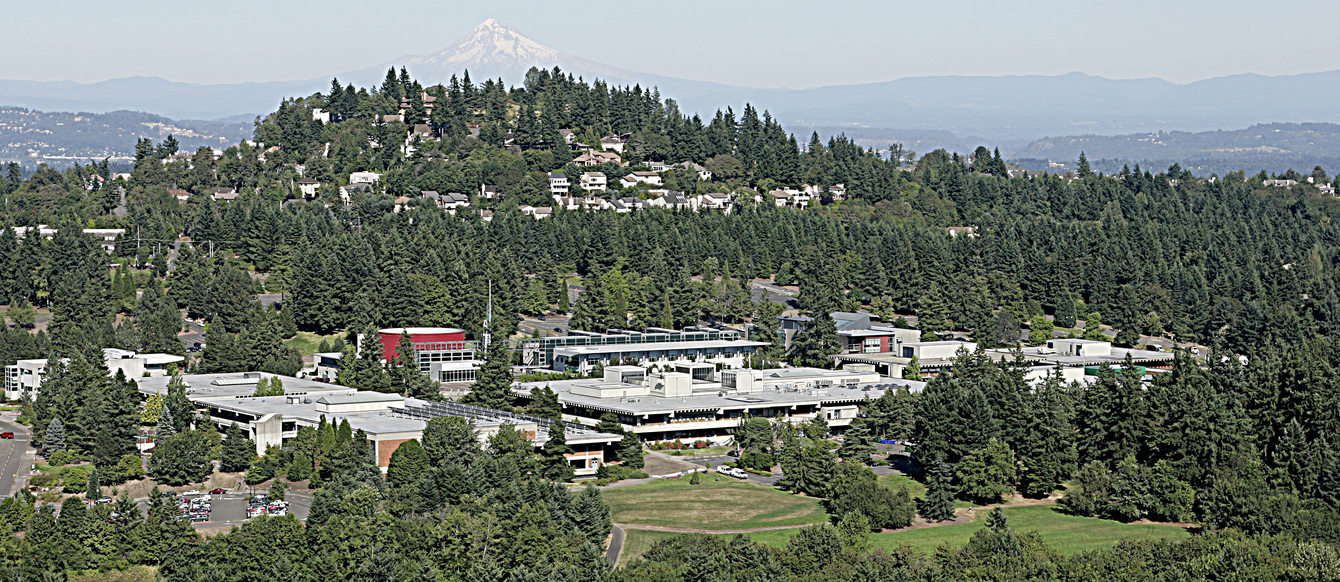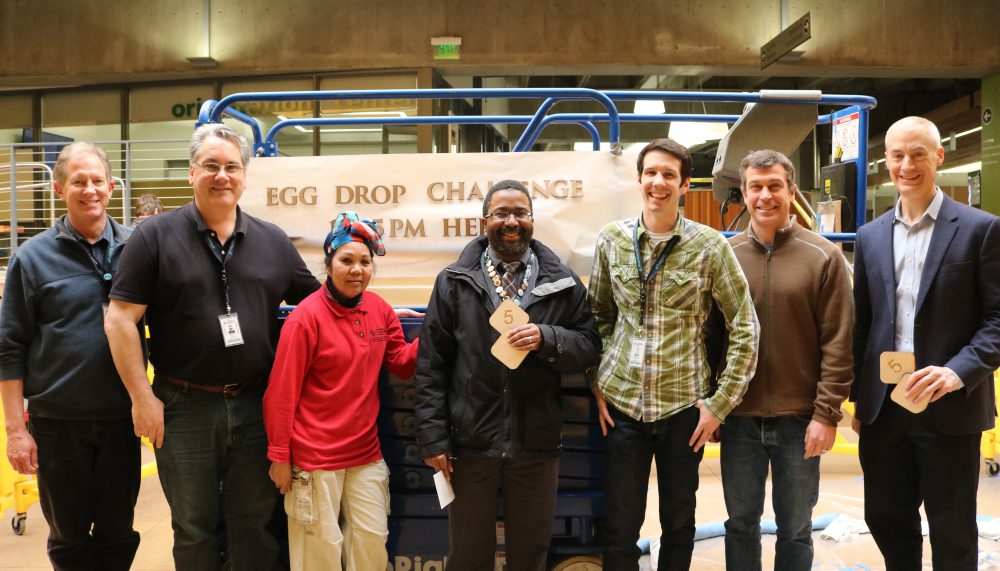

"It's got solid bones," GBD Architects' Kyle Andersen says of the concrete-ensconced PCC campus in Southwest Portland.

Students in PCC Sylvania's CC buiding (image courtesy Portland Community College) And environmentally speaking, although concrete holds its thermal mass like a basement and is thus energy efficient as a material, much of the wintertime heating and summertime cooling disappear through single-pane windows. It's the closest thing to a student union, but unless you're in a select few private offices, it could be noon or midnight and you'd never be able to tell inside the public gathering spaces. Nowhere is the need for reinvention more evident than the central DeBernardis College Center building ("CC" for short), which houses administrative offices, a dining hall, the Women's Resource Center, the Multicultural Center, and more. The plan also calls for the school to have close to net-zero water usage by collecting rainwater and recycling water.

If the school greenlights all of the sustainable investments recommended, it will actually become a net-producer of energy, generating more electricity than the campus needs. The E6/Net Zero Project, as it is known, seeks to transform PCC Sylvania both in terms of how it operates and how it feels to be there. (Sylvan literally means "wooded".)Ĭurrently, however, GBD Architects and Gerding Edlen Development are working with PCC on a group of initiatives, some being enacted as we speak and others on a future wish list, that will help the school potentially save millions of dollars in energy costs while giving PCC a new role in training workers the emerging green economy. But walking amidst the concrete ubiquity of PCC Sylvania or, one yearns for the small forest adjacent to the campus. In the hands of a few select masters, such as Louis Kahn, Brutalist architecture could be sublime. Like many community colleges in the area and in the nation, it has the institutional feel of the era from which it came, that of Brutalism: a subset of modernist architecture from the 1960s and 70s that was most often concrete in form and, while utopian in its idealistic intent, was often practically the opposite in reality: with banal, repetitive forms that today, despite their clean-lined geometry, feel oppressive for their lack of human scale, natural light and warm materials. But it is the oldest facility in the PCC system, as well as the largest. Portland Community College's Sylvania campus came a little later, in 1968. In many cases, it wasn't traditional four-year colleges this wave of new students attended, but one of the literally hundreds of community college and junior colleges built in that period. A total of 2.3 million students enrolled in higher education programs in 1947 swelled to nearly 5 million by 1960. Bill made it possible for a generation of former service members to obtain an education. In the first decade after World War II, the G.I. She is a student at George Fox University, where she is studying Economics and Computer Science.PCC's Sylvania Campus (image courtesy Portland Community College)
#Slavania pcc free#
While this would be about half the cost and much less inconvenient than digging a rail tunnel, it still would be a response to a need that doesn’t exist.ĭespite the low ridership of current transit options, transportation officials continue to follow the mantra of “if you build it they will come,” rather than follow the laws of supply and demand.Įmma Newman is a research associate at Cascade Policy Institute, Oregon’s free market think tank. When asked at what point the costs of building new transit outweigh the benefits, a Metro spokesperson responded that “transportation planning is more an art than a science.”Īn alternative plan under consideration is a rapid bus line which would also service PCC-Sylvania. If this tunnel plan is chosen, Oregon taxpayers will be saddled with paying half of the two billion dollar cost. The tunneling would have a significant impact on the surrounding neighborhood, forcing many homeowners to move away while still requiring PCC students to make a long walk to their classes.Ĭurrently, 84 percent of PCC students drive to school, even with the campus being served by both shuttles and busses. Metro and TriMet are jointly considering an expansion of the light rail system to PCC-Sylvania in SW Portland, by building a tunnel to the campus from Barbur Boulevard.


 0 kommentar(er)
0 kommentar(er)
